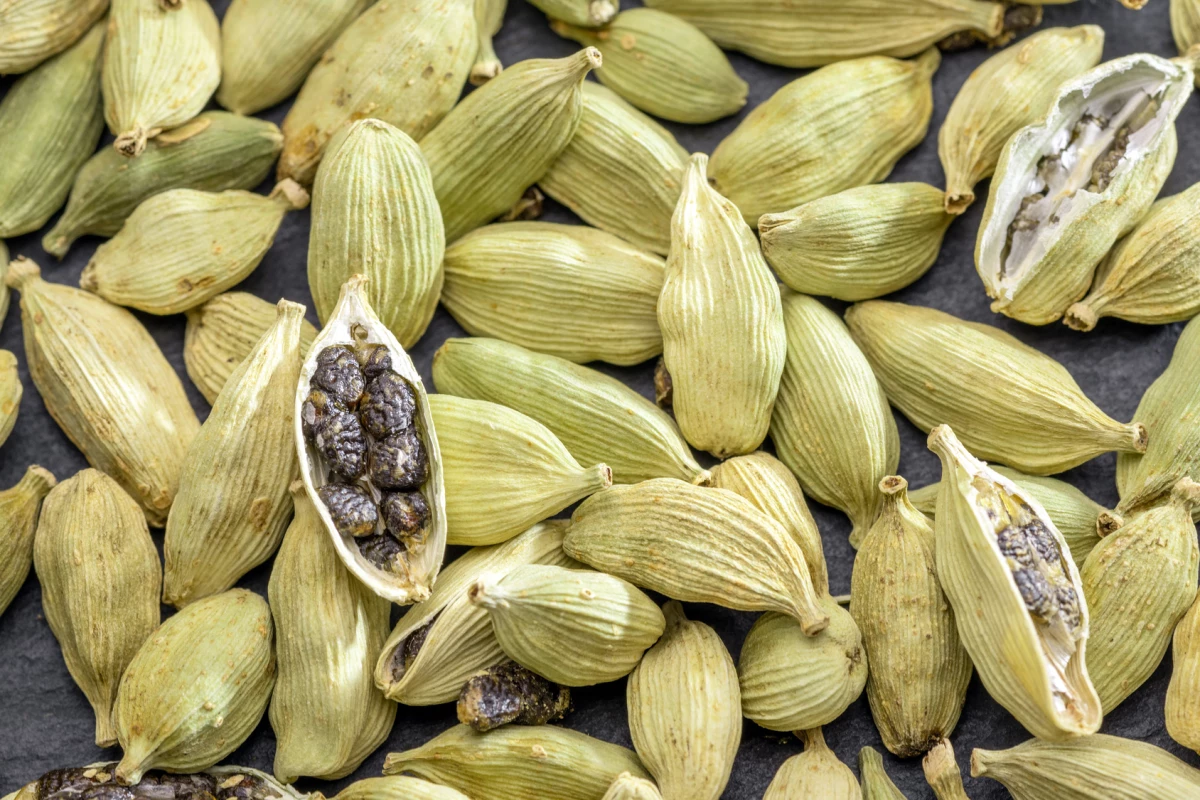A recent study from researchers at Shinshu University in Japan highlights the potential of cardamom extract as a natural antiviral treatment. The research indicates that compounds derived from cardamom seeds can activate the body’s virus-detecting systems, possibly leading to effective treatments for common illnesses such as colds and flu.
The focus of this research is on Type I interferons (IFNs), proteins that serve as the body’s initial response to viral infections, including influenza. These proteins bind to receptors on both infected and uninfected cells, prompting the production of numerous interferon-stimulated genes (ISGs). These genes create an “antiviral state” that restricts viral replication.
Takeshi Kawahara, an Associate Professor at the university’s School of Science and Technology, emphasized the importance of this research: “We have been researching food ingredients that can prevent viral infections in our daily life since before the emergence of the novel coronavirus.” He noted that the pandemic has heightened interest in the antiviral properties of food, facilitating further research opportunities.
The study utilized human lung epithelial cells, which are essential in the respiratory tract’s defense against airborne pathogens. The research team prepared a hot-water extract of cardamom seeds (CSWE) and analyzed its chemical composition through gas and liquid chromatography. They identified 1,8-cineole as a significant compound in the extract. This compound is known for its anti-inflammatory, antioxidant, antimicrobial, and analgesic properties and has been a part of traditional medicine.
The researchers treated the lung cells with CSWE and 1,8-cineole, subsequently exposing them to molecules that mimic viral DNA and RNA to simulate an infection. The results showed that CSWE significantly increased levels of both IFN-⍺ and IFN-β, key antiviral molecules. Additionally, it enhanced ISG expression, effectively aiding cells in blocking viral replication. Notably, these effects were observed regardless of whether the viral mimic was DNA or RNA, suggesting that CSWE may activate multiple immune pathways.
Interestingly, the research indicated that the primary compound, 1,8-cineole, increased IFN and ISG levels in a dose-dependent manner. Remarkably, it was effective even without simulated infections, suggesting a potential to keep cells in a heightened state of readiness.
The study highlights two distinct mechanisms of action. The extract’s effects were linked to the STING pathway, a natural virus-sensing system within cells that detects viral DNA fragments and signals the production of IFNs. Conversely, 1,8-cineole enhanced IFN production by inhibiting a gene (TIPARP) that normally dampens this immune response, effectively releasing a natural “brake” on the immune system.
Importantly, the researchers noted that CSWE did not activate pathways that could lead to inflammation or tissue damage, indicating its potential to bolster antiviral defenses without adverse effects.
Despite these promising findings, the study has limitations. All experiments were conducted in lab-grown cells, rather than in animal or human subjects. Furthermore, the concentrations of cardamom extract used in the study may far exceed those typically achieved through dietary consumption. The research was funded by S&B Foods Inc., which provided the cardamom for the study.
Should future studies validate these results in humans, cardamom extract or 1,8-cineole could be developed as a natural immune booster, offering support alongside vaccines or antiviral medications. Kawahara expressed optimism about the findings: “Cardamom has historically been widely used as a spice with medicinal properties, but based on these findings, it is expected that it can be utilized as an antiviral material to prevent a wide range of viral infections.”
He concluded, “We hope that this research will provide a new perspective on the antiviral properties of food and create an opportunity to focus attention on a wider range of food ingredients that can help prevent viral infections in daily life.”
As this research is still in its early stages, it should not be viewed as a replacement for vaccines or antiviral treatments. The findings were published in the journal Foods in March 2024.







